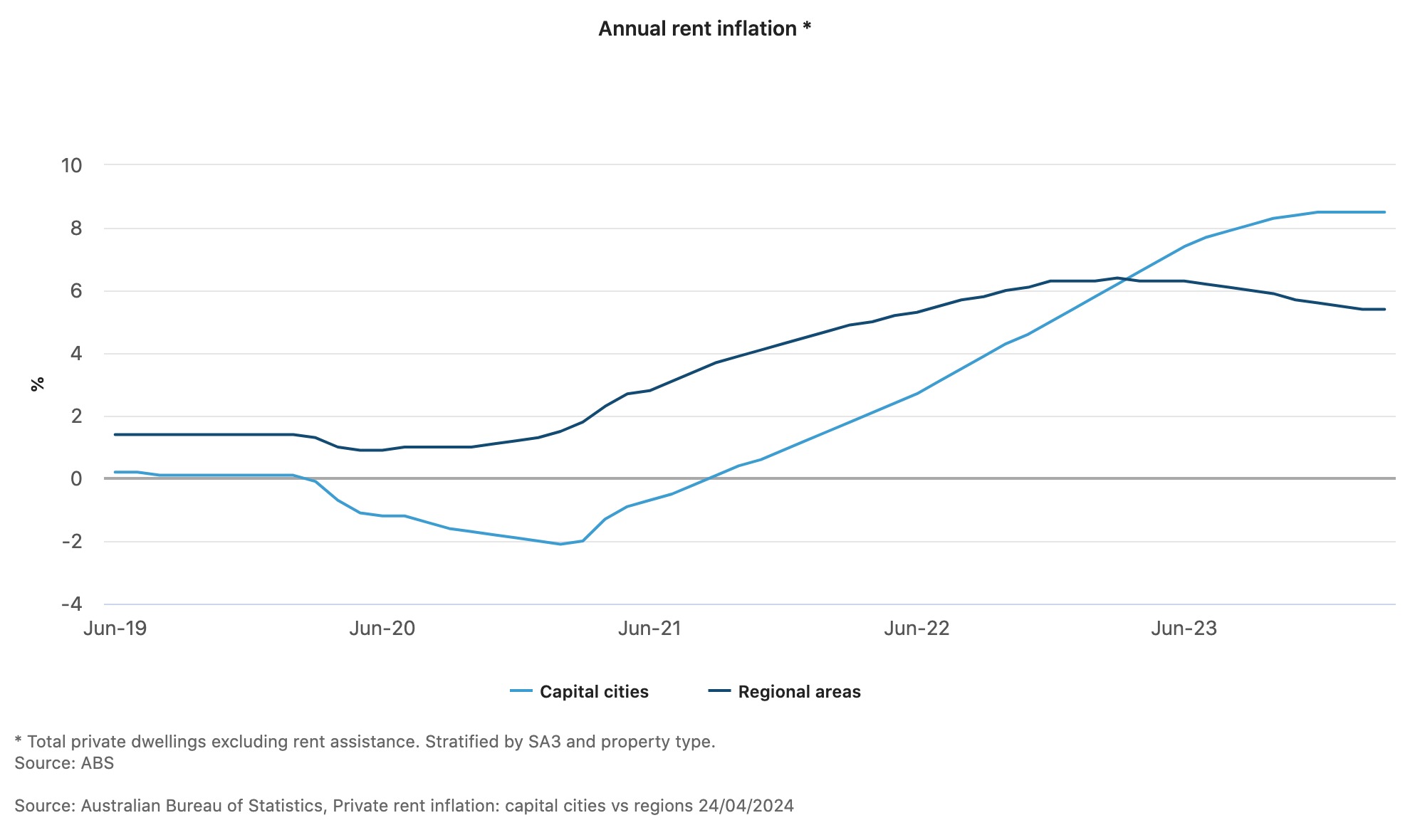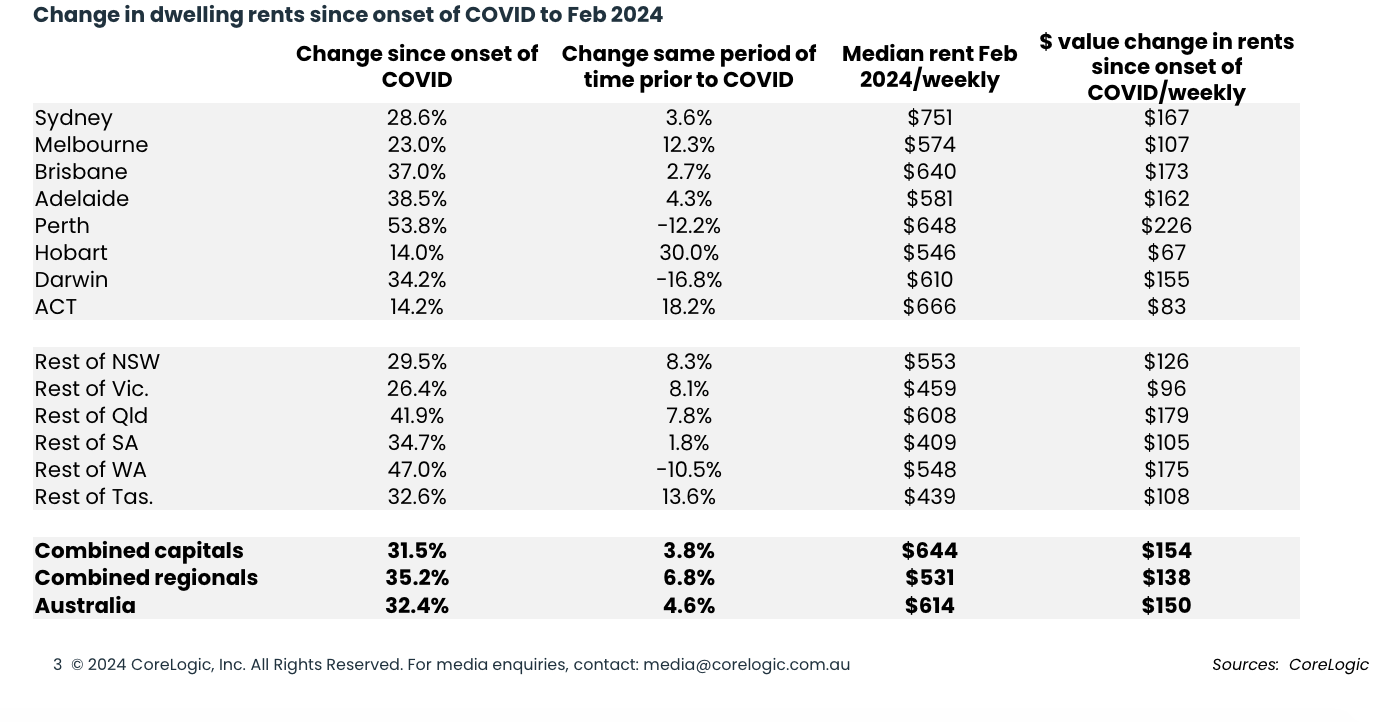Median rent continues to rise in Australia
Australian renters are now facing rental prices at record highs, with the national average sitting at $627 per week.
Data released by CoreLogic in April this year (2024) has confirmed that annual rent growth began accelerating at the beginning of this year, with rents currently 8.5 per cent higher than this time last year.
The capital city with the highest annual rent increase is Perth, where the median weekly rent sits at $669 per week, after increasing 13.6 per cent year-on-year.
Melbourne saw the second highest annual increase of all the state capitals, with rents rising at 9.6 per cent to a median of $589 per week.
Adelaide comes in at third with a year-on-year increase of 9.1%, with our median rent sitting just below Melbourne at $580. In May 2022 we managed to overtake Melbourne weekly rents – and have stayed neck and neck since.
In response to these surges, renters are being pushed further out into the suburbs, with the highest growth in SA seen in the suburbs of Salisbury (12.8 per cent), Playford (11.4 per cent) and Port Adelaide — East (11.3 per cent).
As seen in data from the Australian Bureau of Statistics, rental prices have been on a steep incline since a dip brought on by the pandemic in 2020.

As defined by the ABS, “rents in many inner-city suburbs fell reflecting weak rental demand combined with increased supply of rental dwellings,” during the pandemic.
They put this down to several COVID-19 related factors for the reduced demand and increased supply in the rental market, including:
- International border closures resulting in lower international migration and population growth,
- Freezes on rent increases in Victoria, South Australia, Western Australia, Tasmania and the Australian Capital Territory for periods of 2020 (Measuring the Consumer Price Index during a time of COVID-19),
- Lease re-negotiations and one-off rent reductions for tenants in most states and territories (Measuring the Consumer Price Index during a time of COVID-19),
- An increase in available rental stock with some short-term holiday rental accommodation moving into the long-term market (Evans, Rosewall and Wong 2020), and
- People choosing to move to less densely populated areas and to not move to cities experiencing lockdowns (Agarwal, Bishop and Day 2023) and (Ellis 2022).
Reasons for the increase include:
- Fewer people living in each household through the pandemic
- A temporary spike in overseas migration that skewed rental demand
- Policy failure like the underinvestment in social and affordable housing
- Declining rates of home ownership
Rent prices have increased by more than 32% since the start of the COVID-19 pandemic in 2020, according to property analysis firm CoreLogic, which equals a median weekly rent increase of $150 in four years.

View this post on Instagram




